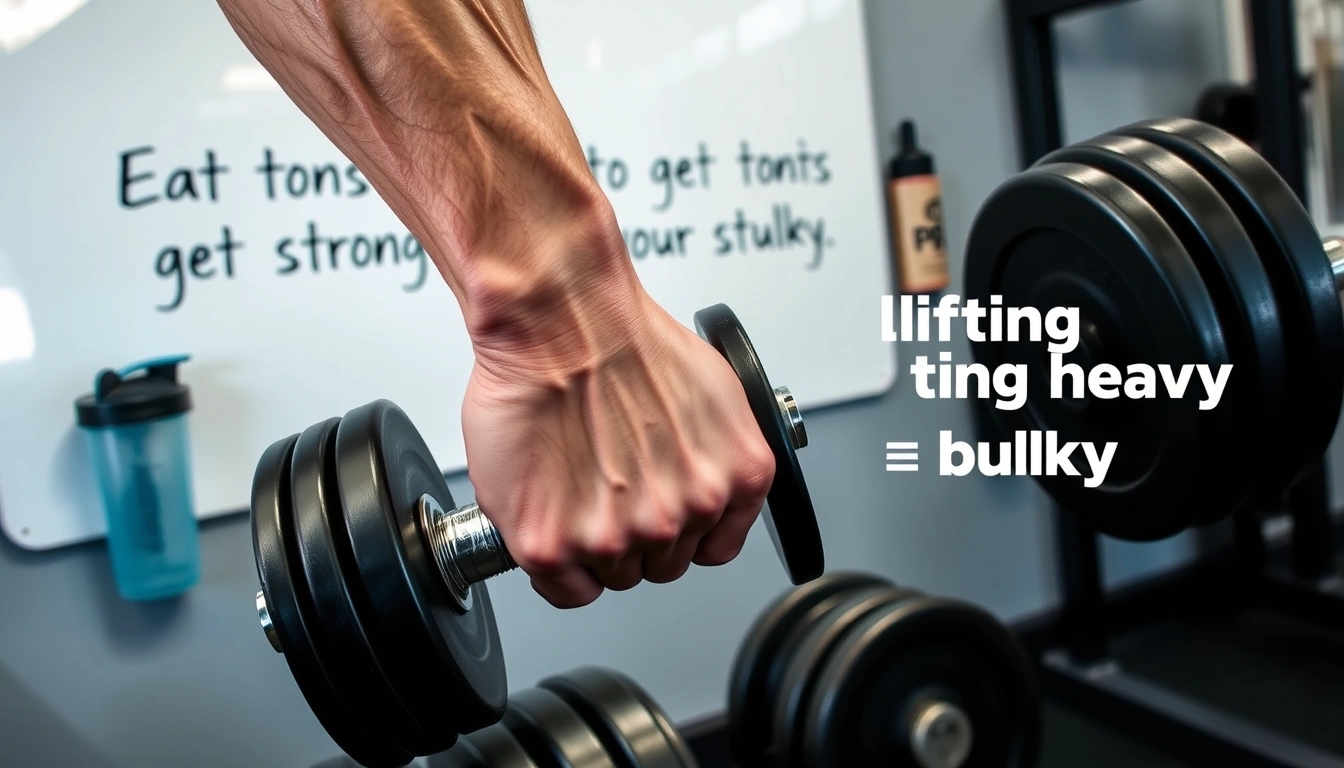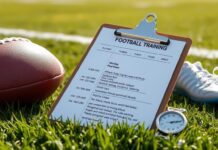So, you want to get seriously strong but hate the idea of turning into the Hulk? Yeah, you’re not alone. The gym is full of folks who think lifting heavy automatically means bulking up like a bodybuilder on steroids. Spoiler alert: it doesn’t have to be that way. Building strength without piling on unwanted mass is an art and a science, and it’s totally doable if you know what you’re doing. Let’s dive into this muscle mystery with some real talk, busted myths, and no-nonsense tips.
First off, strength and size aren’t the same beast. Sure, big muscles usually mean you’re strong, but you can be strong without looking like you just stepped out of a comic book. Strength is about how efficiently your muscles fire and recruit fibers, not just how big they are. Think of it like a sports car versus a truck — the truck’s bigger, but the sports car can still pack a punch and zoom faster. Science backs this up: lifting heavy weights with low reps trains your nervous system to recruit more muscle fibers, boosting strength without necessarily making your muscles blow up.
| Training Style | Effect on Muscle | Ideal Rep Range |
|---|---|---|
| Low reps, heavy weight | Max strength, minimal size | 1-5 reps |
| Moderate reps, moderate weight | Strength and size balanced | 6-12 reps |
| High reps, light weight | Endurance, minimal strength | 15+ reps |
Now, how do you train for that lean strength? Focus on low reps with heavy weights — but don’t be a meathead and ignore form. Compound exercises like deadlifts, squats, and bench presses are your friends here. They recruit multiple muscles at once, making your body efficient and powerful without necessarily turning you into a mountain of muscle. Also, don’t forget explosive moves like power cleans or kettlebell swings; they build power and speed, not just bulk.
Nutrition? Oh boy, it’s not just about shoveling in protein shakes like they’re candy bars. Eating smart means fueling your body with the right balance of calories and macronutrients. If you eat in a huge surplus, guess what? You’ll bulk. To stay lean, aim for a slight calorie surplus or maintenance level, focusing on protein to repair muscles and carbs for energy. Fats? Don’t cut them out — your hormones love a little healthy fat.
- Protein: 1.2-1.6g per kg of body weight
- Carbs: Moderate, to fuel workouts
- Fats: Essential for recovery and hormones
Recovery is the unsung hero here. No, you don’t get stronger in the gym; you get stronger when you rest. Sleep like it’s your job, take rest days seriously, and avoid the temptation to train every day like a maniac. Overtraining can lead to injury, fatigue, and ironically, muscle loss.
Common myths busted:
- Myth: You must eat tons to get strong.
Reality: Quality beats quantity. Overeating just adds fat. - Myth: Heavy lifting always means bulk.
Reality: It’s about how you train and eat, not just how much you lift. - Myth: Cardio ruins strength gains.
Reality: Smart cardio can improve recovery and endurance.
Tracking progress? Forget obsessing over the scale or muscle size. Instead, focus on performance metrics like how much weight you lift, how many reps you can do, or even how your clothes fit. Strength gains are more about function than form.
| Progress Tracking | Why It Works |
|---|---|
| Max weight lifted | Direct measure of strength |
| Reps at a given weight | Shows endurance and strength endurance |
| Body composition changes | Ensures you’re lean, not just heavy |
Supplements? Meh. Most are fluff. Creatine is the only one with solid evidence for boosting strength without bulk. Protein powders help meet your daily needs but aren’t magic.
In the end, building strength without bulking up is a balancing act. Train smart, eat right, rest well, and keep your eyes on functional progress rather than just the mirror. You don’t have to be big to be strong — just ask any Olympic weightlifter or gymnast.
Now, get out there and lift heavy, but stay lean!
Understanding Strength vs. Size
Alright, let’s get one thing straight right off the bat: muscle strength and muscle size are not the same beast. Sure, they’re buddies, but they don’t always travel together. You might think that lifting heavy means you’re on the fast track to Hulk-ville, but nope — the science says otherwise. So, what gives?
First, let’s break down the basics. Muscle size, or hypertrophy if you wanna get fancy, is about the actual volume of your muscle fibers growing bigger. This usually happens when you do moderate to high reps with moderate weights, causing tiny tears in your muscle fibers that repair and grow. On the flip side, muscle strength is more about how well your nervous system can recruit muscle fibers to generate force. Think of it like your brain telling your muscles, “Hey, time to bring out the big guns!”
| Aspect | Muscle Size (Hypertrophy) | Muscle Strength |
|---|---|---|
| Primary Goal | Increase muscle volume | Increase force output |
| Training Style | Moderate weight, 8-12 reps | Heavy weight, low reps (1-5) |
| Physiological Mechanism | Muscle fiber growth | Neural adaptations |
| Typical Outcome | Bulkier muscles | Stronger muscles, not necessarily bigger |
Now, here’s where it gets juicy: lifting heavy weights doesn’t always mean you’re gonna blow up like a balloon. You can get seriously strong by training your nervous system to fire up more muscle fibers efficiently without necessarily packing on a ton of muscle mass. This is why some powerlifters look like regular folks but can lift insane weights.
- Neural efficiency: Your body gets better at activating the right muscles at the right time.
- Fiber recruitment: You learn to engage more fast-twitch fibers, which are the “explosive” ones.
- Coordination: Your muscles work together smoother, so you get more bang for your buck.
To add some spice, research shows that the type of training you do influences whether you bulk up or just get strong. If you’re smashing heavy weights for low reps with plenty of rest, your nervous system adapts more than your muscles growing. But if you’re pumping out reps with moderate weight and shorter rest, hypertrophy is the name of the game.
So, next time someone tells you “lifting heavy huge muscles,” you can chuckle and drop some knowledge bombs. Strength is as much about your brain and nervous system as it is about your muscles. Don’t get me wrong, bulking up is cool if that’s your goal, but it’s not an automatic side effect of lifting heavy.
Quick recap:- Strength neural adaptations + muscle fiber recruitment- Size muscle fiber growth (hypertrophy)- Heavy weights + low reps strength gains without bulk- Moderate weights + higher reps muscle size gains
In the end, it’s all about what you want. Want to be strong and lean? Train smart, focus on neural efficiency, and don’t freak out about getting huge. Want to look like a bodybuilder? Then bring on the volume and nutrition. But remember, strength and size don’t always come hand-in-hand, and that’s a fact worth knowing before you hit the gym and start freaking out about every pound on the bar.
Choosing the Right Training Style
Alright, so you want to get stronger but without turning into the Hulk, right? That’s the million-dollar question for many gym rats and weekend warriors alike. The truth is, building strength and bulking up aren’t always two peas in the same pod. It’s all about how you train — the rep ranges, the intensity, and the types of exercises you pick. Let’s break this down and clear the fog.
First off, rep ranges are your best friend here. If you’ve been told to just “lift heavy and low reps,” that’s partly true but incomplete. Heavy weights with low reps (think 1-5 reps per set) definitely build strength, but if you’re not eating a ton, your muscles won’t necessarily balloon. On the flip side, doing 8-12 reps usually leans more towards hypertrophy (aka muscle size). So, if your goal is strength without the bulk, stick around the 3-6 rep range. It’s like telling your muscles, “Hey, get tough, but don’t get too chubby.”
| Rep Range | Primary Focus | Typical Outcome |
|---|---|---|
| 1-5 reps | Maximal Strength | Stronger muscles, minimal size gain |
| 6-12 reps | Muscle Growth | Hypertrophy, increased muscle size |
| 12+ reps | Endurance | Muscle stamina, little size or strength gain |
Next up, intensity matters but don’t go all-in every session or you’ll burn out faster than a cheap candle. Intensity here means how close you push yourself to failure. For strength, you want to lift heavy enough that the last rep or two really challenge you, but not so heavy that form goes out the window or injury looms. Also, longer rest periods between sets (2-5 minutes) help you recover and hit those heavy lifts hard again.
Now, let’s chat about exercise selection. Compound movements like squats, deadlifts, and bench presses are your go-to. Why? Because they recruit multiple muscle groups and build functional strength. But here’s the kicker — you want to avoid high-volume isolation exercises that pump up muscle size more than strength. So, skip endless bicep curls if you’re not after the “beach look” and focus on those big lifts.
- Powerlifting style: Low reps, heavy weights, long rest.
- Olympic lifts: Explosive moves like cleans and snatches, great for power without bulk.
- Bodyweight strength: Exercises like pull-ups and push-ups, effective for lean strength.
One last nugget: don’t be fooled by the myth that lifting heavy means instant bulk. Your genetics, diet, and overall training volume play massive roles. You can totally get strong as heck, stay lean, and not look like you’re smuggling dumbbells under your shirt.
So, to wrap it up in a neat little package:
Focus on 3-6 reps per set, pick compound and explosive exercises, keep rest times generous, and dial in your nutrition. That’s the sweet spot where strength gains happen without the unwanted mass. Now go forth and lift smart — your future lean, strong self will thank you.

The Role of Nutrition in Strength Gains
Alright, let’s cut to the chase: if you want to get stronger without turning into a walking meatball, you’ve got to get your nutrition game on point. It’s not just about shoveling down protein shakes and extra calories like a bodybuilder prepping for a contest. Nope, building strength while staying lean is a whole different ballgame, and how you fuel your body plays a starring role.
First off, calorie intake. Here’s the kicker — eating a massive surplus doesn’t automatically mean more strength. Sure, if you’re starving, your muscles won’t have the energy to push heavy weights, but eating too much just leads to unwanted fat gain. The sweet spot? A slight calorie surplus or even maintenance level calories can be enough if you’re smart about macronutrients. Think of calories as fuel for your engine, but don’t flood the tank or you’ll spill over.
| Macronutrient | Role in Strength | Recommended Intake |
|---|---|---|
| Protein | Repairs and builds muscle fibers, essential for recovery and strength gains. | 1.2-1.6g per kg bodyweight |
| Carbohydrates | Primary energy source for intense workouts; spares protein from being used as fuel. | 3-5g per kg bodyweight |
| Fats | Supports hormone production and overall health; don’t neglect healthy fats. | 0.8-1g per kg bodyweight |
Now, protein often steals the spotlight, and yes, it’s crucial. But don’t ignore carbs — they’re the unsung heroes that keep your energy levels up, especially during those brutal training sessions. Without enough carbs, you’re basically trying to run a marathon on an empty tank. And fats? They’re not the enemy either. Healthy fats keep your hormones balanced, which is vital for strength gains and recovery.
Here’s a pro tip: timing your meals can make a difference. Eating protein and carbs within a couple of hours post-workout helps kickstart muscle repair and replenish glycogen stores. But don’t get obsessed with the clock — overall daily intake matters more than perfect timing.
- Focus on nutrient-dense foods: Lean meats, fish, eggs, whole grains, fruits, veggies, nuts, and seeds.
- Hydrate like a champ: Water is often overlooked but is key for muscle function and recovery.
- Avoid empty calories: Junk food might fill you up, but it won’t fuel strength.
And let’s bust a myth while we’re at it: eating tons of calories doesn’t guarantee muscle growth. Your body can only build muscle at a certain rate. Excess calories? They often just turn into fat. So, eating smart — not just eating more — is the way to go.
Summary:- Slight calorie surplus or maintenance calories work best.- Protein is king but carbs fuel your workouts.- Healthy fats keep hormones in check.- Meal timing helps but isn’t everything.- Hydration and nutrient-dense foods are non-negotiable.
In the end, strength without size is all about balance. You want to feed your muscles enough to get stronger but not so much that you bulk up like a linebacker. It’s a tightrope walk, but with the right nutrition strategy, you can smash your strength goals while keeping your silhouette lean and mean.
Importance of Recovery and Rest
Alright, let’s get real about recovery — the unsung hero in your quest to build strength without turning into the Hulk. You might be grinding away in the gym, pushing weights like a beast, but if you’re skipping on recovery, you’re basically throwing all that effort down the drain. Building strength isn’t just about lifting heavy; it’s about letting your body catch up and adapt. And guess what? That happens mostly when you’re resting.
Why Recovery Matters More Than You Think
When you train, especially with heavy loads aimed at boosting strength, your muscle fibers undergo tiny tears. That’s normal, and actually a good thing. But here’s the kicker: those tears don’t magically fix themselves while you’re pumping iron again the next day. Nope, they repair when you’re chilling — sleeping, relaxing, and giving your nervous system a break. Without proper recovery, you risk overtraining, which is like running your car engine without oil — eventually, it’s gonna seize up.
| Recovery Element | Why It’s Crucial | Tips for Improvement |
|---|---|---|
| Sleep | Growth hormone release and muscle repair happen mostly during deep sleep stages. | Aim for 7-9 hours; keep a consistent bedtime; avoid screens before sleep. |
| Rest Days | Allows muscles and central nervous system to recover, reducing injury risk. | Schedule at least 1-2 rest days weekly; active recovery like light walking can help. |
| Nutrition | Provides building blocks for repair and energy replenishment. | Eat protein-rich meals post-workout; stay hydrated. |
Now, don’t get me wrong — rest doesn’t mean becoming a couch potato. Active recovery days, where you do light cardio, stretching, or yoga, can actually speed up healing by increasing blood flow. But pushing yourself hard every single day? That’s a fast track to burnout and stalled progress.
- Sleep Like Your Gains Depend on It: Because they do. Lack of sleep not only kills your strength gains but also messes with your hormones, making you cranky and less motivated.
- Listen to Your Body: Feeling wiped out? Sore beyond normal? Take a day off. Ignoring these signs is like ignoring a check engine light — eventually, something’s gonna break.
- Don’t Fear Rest Days: They’re part of the program, not a sign of weakness.
Here’s a little secret — sometimes, less is more. Overtraining is a real buzzkill. It can cause fatigue, decrease performance, and even lead to muscle loss. So, if your goal is to build strength without bulking up, balancing your workout intensity with smart recovery is key.
Common Overtraining Symptoms:- Persistent muscle soreness- Drop in performance- Trouble sleeping- Increased irritability- Elevated resting heart rate
In the end, getting stronger without bulking up is a delicate dance between training hard and recovering smarter. Don’t just chase the weights; chase good sleep, take your rest days seriously, and eat well. Your muscles and your sanity will thank you.
Remember: Gains aren’t made in the gym alone — they’re made in the quiet moments when you rest, recharge, and let your body do its magic.
Top Exercises for Lean Strength
Alright, let’s get straight to the point—building strength without turning into the Hulk isn’t just a pipe dream. There’s a sweet spot where you can get seriously strong without packing on the kind of muscle mass that makes you look like you’re ready for a wrestling match. It’s all about picking the right exercises and training smart, not just lifting heavy and hoping for the best. So, what’s the secret sauce? Here’s a rundown of the best moves that crank up your strength meter while keeping hypertrophy (that’s fancy talk for muscle size) on the down low.
First off, compound lifts are your best friends here. Think deadlifts, squats, and bench presses. These bad boys recruit multiple muscle groups, firing up your nervous system to get stronger without necessarily making your biceps pop out like balloons. But here’s the catch—you want to keep the reps low and the intensity high. Around 3-5 reps per set at 85-95% of your one-rep max is the sweet spot. This trains your muscles to generate maximum force, not bulk up.
| Exercise | Reps | Sets | Why It Works |
|---|---|---|---|
| Deadlift | 3-5 | 3-5 | Engages entire posterior chain, builds raw power |
| Squat | 3-5 | 3-5 | Strengthens legs and core, improves stability |
| Bench Press | 3-5 | 3-5 | Targets upper body pushing strength |
| Overhead Press | 3-5 | 3-5 | Builds shoulder and triceps strength |
| Pull-ups | 3-6 | 3-4 | Develops upper back and grip strength |
Now, you might wonder, “Why not just do more reps and get bigger?” Well, more reps usually mean more time under tension, which is the main driver for hypertrophy. Since you’re aiming to stay lean, it’s better to focus on moving heavy weights for fewer reps. Also, incorporating explosive movements like power cleans or kettlebell swings can boost your strength and power without necessarily adding bulk. They train your fast-twitch muscle fibers, the ones responsible for quick, powerful movements.
- Isometric holds like planks or wall sits are underrated gems. They improve strength endurance and stabilize muscles without making them balloon.
- Unilateral exercises (single-leg or single-arm moves) help fix imbalances and build functional strength.
- Don’t forget core work—a strong core means better force transfer and injury prevention.
Here’s a quick practical tip: if your goal is strength without size, keep your rest periods longer—about 2-3 minutes between sets. This lets your muscles recover enough to lift heavy again without stressing them into growth mode. Also, avoid training to failure every set; pushing to the brink too often invites hypertrophy and burnout.
Example Workout for Lean Strength:- Deadlift: 4 sets of 4 reps, 3 min rest- Overhead Press: 3 sets of 5 reps, 2 min rest- Pull-ups: 3 sets of 6 reps, 2 min rest- Plank Hold: 3 sets of 45 seconds
In the end, it’s not just about the exercises but how you do them. Focus on quality over quantity, keep the intensity high, and don’t get fooled by the “more is better” myth. Strength is a skill, and with the right moves and mindset, you can get strong as hell without turning into a muscle mountain. Who said you can’t have your strength and keep your sleek physique too?

Myths About Bulking and Strength
Alright, let’s get one thing straight before we dive in: lifting heavy weights does NOT automatically turn you into the Hulk overnight. Yet, somehow, the gym grapevine is buzzing with myths like “you gotta eat a truckload of food to get strong” or “if you lift heavy, you’re gonna bulk up like a bodybuilder.” News flash — that’s not exactly how it works. Let’s bust these myths wide open, shall we?
- Myth #1: You have to eat tons to get strong. Nope, not true. Sure, nutrition plays a crucial role in strength gains, but gobbling down mountains of food won’t magically make you stronger. Your body needs adequate fuel — especially protein — but overeating just leads to fat gain, not muscle gain. Experts recommend a moderate calorie surplus, tailored to your goals, not a free-for-all buffet.
- Myth #2: Lifting heavy weights always makes you bulky. This one’s a classic. The truth? Muscle size (hypertrophy) and muscle strength are related but not identical. You can train to maximize strength without piling on mass by focusing on lower reps with heavier weights and longer rest periods. It’s all about how you train, not just what you lift.
Here’s a quick comparison table to clarify things:
| Factor | Bulking (Hypertrophy) | Strength (Without Bulk) |
|---|---|---|
| Reps per Set | 8-12 reps | 1-5 reps |
| Rest Between Sets | 30-90 seconds | 2-5 minutes |
| Training Focus | Muscle size and endurance | Neural efficiency and power |
| Calorie Intake | Surplus (often high) | Maintenance or slight surplus |
Now, let’s sprinkle in some real-world wisdom from the experts. Dr. Emily Carter, a sports physiologist, points out, “Strength gains largely come from neural adaptations — your nervous system becoming more efficient at recruiting muscle fibers. That means you don’t necessarily need to grow huge muscles to get stronger.” Makes sense, right? It’s not just about the size of your muscles but how well your brain talks to them.
And nutrition guru Jake Simmons adds, “If you’re eating like a horse but not training with purpose, you’re just gonna get soft, not strong. Focus on quality protein, balanced macros, and timing your meals around workouts.” So, if you think you can out-eat bad training, think again.
- Practical tip: Track your progress with strength markers like how much weight you can lift or your rep max, rather than obsessing over the scale. Muscle is denser than fat, so the number on the scale might not tell the whole story.
- Another tip: Mixing in explosive movements like deadlifts, squats, and Olympic lifts can boost strength without necessarily bulking you up.
To wrap it up, don’t buy into the hype that lifting heavy means you’re doomed to bulk up. It’s about training smart, eating right, and understanding your body’s unique response. So, next time someone tells you “you gotta eat tons to get strong,” just smile and say, “Yeah, and pigs might fly.” Because building lean strength is an art, not a myth.
Tracking Progress Without the Scale Obsession
Okay, so you’ve been hitting the gym hard, lifting heavier each week, but the scale? Yeah, it’s stubbornly stuck or even creeping up a bit. Cue the panic, right? Well, hold your horses. Weight gain isn’t the only way to measure strength progress, and honestly, obsessing over the number on the scale can do more harm than good. Let’s get real: muscle is denser than fat, and sometimes your body composition shifts without the scale reflecting it properly. So, how do you keep tabs on your strength without turning into a scale zombie? Here’s the lowdown.
- Track Your Lifts, Not Your Pounds: Keep a workout journal or use an app to log your sets, reps, and weights. Seeing that squat go from 100 to 150 pounds over a month? That’s progress right there. Forget the scale; focus on what your body can do.
- Measure Performance, Not Just Appearance: How’s your endurance? Can you do more reps or hold a plank longer? These are solid indicators of growing strength and fitness.
- Body Measurements and Clothes Fit: Tape measure in hand, check your waist, arms, chest, and hips every few weeks. Sometimes your clothes fit better, even if the scale says otherwise — that’s a win.
| Alternative Metrics | Why It Matters |
|---|---|
| Rep Max Improvements | Shows increased muscular strength and endurance beyond just weight lifted. |
| Body Fat Percentage | Gives a clearer picture of fat loss vs. muscle gain, unlike scale weight alone. |
| Visual Progress (Photos) | Sometimes the mirror tells the story better than numbers. |
| Energy Levels & Mood | Feeling stronger often means feeling better overall — don’t underestimate this! |
Also, don’t forget that strength gains can be sneaky. You might not see massive muscle growth immediately, but your nervous system is getting smarter, recruiting muscle fibers more efficiently. This means you’re stronger, even if your biceps aren’t popping just yet. Patience, grasshopper!
Here’s a little practical tip: set mini-goals that aren’t scale-related. Like, “I want to deadlift 10 pounds more this month” or “I’ll add 5 seconds to my plank hold.” These bite-sized wins keep motivation high and the obsession with weight low.
Example Weekly Tracker:- Squat: 3 sets x 8 reps @ 120 lbs- Deadlift: 3 sets x 5 reps @ 150 lbs- Push-ups: 3 sets x 20 reps- Plank: 3 x 45 secondsNotes: Felt stronger today, grip improving, no joint pain.
Finally, remember that the scale is just one tool in your toolbox. It doesn’t measure your grit, your hustle, or how much you’ve improved at pushing yourself. So chill out, celebrate every small victory, and keep your eyes on the bigger picture — becoming stronger without losing your mind over a number.
In short: ditch the scale obsession, embrace alternative metrics, and watch your strength soar without the drama.
Supplements: Helpful or Hype?
Alright, let’s cut through the noise about supplements and figure out which ones actually help you get stronger without turning you into the Hulk. Because honestly, the supplement world is like a wild jungle — some stuff is gold, some is glitter, and some is just plain snake oil. So, buckle up, we’re diving into the no-nonsense truth.
First off, creatine — the OG strength booster. This little powder has been around forever and for good reason. It helps your muscles produce energy faster during high-intensity workouts, which means you can push harder and recover quicker. But here’s the kicker: creatine doesn’t magically bulk you up. Sure, you might get a bit of water retention in your muscles, but that’s not the same as packing on fat or huge muscle mass. So if you want strength gains without the bulk, creatine is your buddy.
| Supplement | Effect on Strength | Bulk Potential | Verdict |
|---|---|---|---|
| Creatine | Boosts energy production, improves power output | Minimal (water weight only) | Recommended |
| Protein Powders | Supports muscle repair and recovery | Depends on intake and diet | Use wisely |
| Testosterone Boosters | Claims to increase muscle mass | High (can increase size) | Mostly hype |
| BCAAs | May reduce muscle soreness | Neutral | Optional |
| Pre-Workout Stimulants | Enhances focus and energy | None | Personal preference |
Now, protein powders — classic. Yes, protein is crucial for muscle repair, but here’s a little secret: just because you slam a protein shake doesn’t mean you’re gonna bulk up like a bodybuilder. Your overall calorie intake and training style matter way more. If you’re eating at maintenance or slightly below, you won’t be ballooning in size. So, protein supplements can help maintain strength gains and recovery without necessarily adding bulk.
Then there’s the shady territory of testosterone boosters. These are often marketed as miracle pills to get you ripped and strong overnight. Spoiler alert: most of them are pure marketing fluff. Real hormonal changes require medical supervision, and random supplements won’t do much besides empty your wallet. If you want strength without bulk, these are better off avoided.
- BCAAs (Branched-Chain Amino Acids): Some swear by them for reducing soreness, but the science is meh. They won’t bulk you up, but they also won’t make you superhuman.
- Pre-workout supplements: Great for that extra kick to power through workouts, but they don’t directly build strength or size.
Let’s be real — no supplement replaces good old-fashioned training, nutrition, and rest. If you’re banking on a pill or powder to do the heavy lifting, you’re setting yourself up for disappointment. Supplements are just that — supplements — they support your efforts but don’t replace them.
So, here’s the takeaway: creatine and smart protein use can genuinely help you build strength without piling on unnecessary bulk. Avoid the hype machines like testosterone boosters and miracle powders promising overnight miracles. Keep your expectations real, train hard, eat smart, and use supplements as the cherry on top — not the whole cake.
In the end, the best supplement is consistency and patience. No magic pill will do what sweat and grit can.

Creating a Personalized Strength Plan
Alright, so you want to build a strength program that’s all about getting those lean gains without turning into the Hulk overnight? Good call. Crafting a plan that juggles workouts, nutrition, and your day-to-day life can be tricky, but it’s definitely doable. Let’s break it down and get real about what works and what’s just fluff.
First things first: Know your goals. Are you after raw power? Or maybe you want to lift heavier but keep your physique sleek? This distinction is crucial because your training style and nutrition will hinge on it. Don’t just blindly copy what the gym bro next to you is doing — tailor it to your own body and lifestyle.
- Workouts: Focus on compound movements like deadlifts, squats, and bench presses. These bad boys recruit multiple muscle groups and build strength efficiently.
- Reps and Sets: Keep your reps in the 3-6 range for strength gains, but don’t neglect some moderate reps (8-12) for muscle endurance. Mix it up.
- Intensity: Lift heavy enough to challenge yourself but avoid going to failure every set. You want progress, not burnout.
Now, let’s talk nutrition because you can’t out-train a bad diet. To stay lean but strong, your calorie intake should be just enough to fuel recovery and muscle repair — no crazy bulking phases needed. Protein is your best friend here (aim for about 1.2-1.6 grams per kg of body weight), but carbs and fats play their roles too.
| Macronutrient | Role | Recommended Amount |
|---|---|---|
| Protein | Muscle repair and growth | 1.2 – 1.6 g/kg body weight |
| Carbohydrates | Energy for workouts and recovery | Moderate, depending on activity level |
| Fats | Hormone production and overall health | 20-30% of daily calories |
Don’t forget lifestyle factors — sleep, stress, and recovery are often overlooked but are game-changers. If you’re running on 4 hours of sleep and stressing about work, your gains will stall faster than you can say “deadlift.” Aim for 7-9 hours of quality sleep, schedule rest days, and listen to your body.
Here’s a quick checklist to keep you on track:
- Set clear, realistic strength goals.
- Choose exercises that prioritize strength over size.
- Maintain a balanced diet that supports your goals without excess calories.
- Prioritize sleep and recovery.
- Track progress with strength metrics, not just weight on the scale.
Remember, no one-size-fits-all here. Your strength plan should evolve as you do. If you hit a plateau, tweak your reps, change your nutrition slightly, or add more rest. The key is consistency and listening to your body — not chasing some cookie-cutter program that promises overnight miracles.
In the end, building strength while staying lean is more of an art than a science. It’s about finding that sweet spot where your workouts, food, and lifestyle vibe together. So, don’t stress the small stuff, keep experimenting, and enjoy the process. Gains will come — just maybe not as fast as you want (and that’s totally okay).
Now, go crush that strength plan!
Frequently Asked Questions (The title must be written in English.)
- Can I get stronger without getting bulky?
Absolutely! Building strength doesn’t always mean adding massive muscle size. By focusing on lower rep ranges with heavier weights and managing your nutrition carefully, you can increase your power while keeping a lean physique. Think of it like tuning a race car engine for speed rather than adding heavy armor.
- What’s the difference between muscle size and muscle strength?
Muscle size (hypertrophy) is about how big your muscles look, while muscle strength is about how much force your muscles can produce. You can be incredibly strong without having huge muscles because strength depends on factors like neural adaptations and muscle fiber recruitment, not just size.
- Which training style helps build strength without bulking up?
Focus on low to moderate reps (3-6) with heavier weights and longer rest periods. Compound movements like deadlifts, squats, and bench presses are your best friends here. Avoid high-rep, high-volume workouts that typically drive muscle growth and bulk.
- How important is nutrition in gaining strength without size?
Nutrition is key! Eating enough protein supports muscle repair, but controlling your calorie intake prevents excess muscle gain. It’s like fueling a car with just the right amount of gas—too much, and you gain unwanted weight; too little, and you lose power.
- Do I need supplements to build lean strength?
Supplements can help but aren’t magic. Creatine and protein powders are popular and backed by science, but many other products are just hype. Focus on solid training and nutrition first—supplements are the cherry on top, not the whole cake.
- How can I track strength progress without obsessing over weight gain?
Forget the scale! Track progress by monitoring your performance—how much you lift, how many reps you complete, and how your technique improves. Using tools like training logs or apps can keep you motivated without stressing about body weight fluctuations.
- Is rest really that important for strength gains?
Rest is crucial! Your muscles and nervous system need time to recover and adapt. Skipping rest can lead to burnout and injury. Think of rest as the pit stop that keeps your engine running smoothly and efficiently.
- Can lifting heavy weights always make me bulky?
Not necessarily. Bulking up depends on your training style, nutrition, and genetics. Heavy lifting with proper rest and controlled calories can boost strength without significant size increase. It’s like lifting a heavy toolbox—you get stronger hands, not bigger arms.












